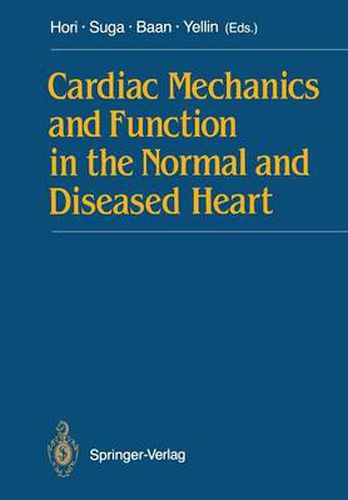Readings Newsletter
Become a Readings Member to make your shopping experience even easier.
Sign in or sign up for free!
You’re not far away from qualifying for FREE standard shipping within Australia
You’ve qualified for FREE standard shipping within Australia
The cart is loading…






This title is printed to order. This book may have been self-published. If so, we cannot guarantee the quality of the content. In the main most books will have gone through the editing process however some may not. We therefore suggest that you be aware of this before ordering this book. If in doubt check either the author or publisher’s details as we are unable to accept any returns unless they are faulty. Please contact us if you have any questions.
Cardiovascular dynamics is a field in which modelling and systems analysis have formed an extremely important discipline. For example, understanding of even such a fundamental function of the circulation as the relationship between central venous pressure apd cardiac output has required evolution of a pertinent model based on years of exhaustive ex perimental investigations by Starling, Starr, and Guyton. Hemodynamic analyses of pulsatile pressures and flows in the arteries and veins have been a continuing challenge taken up by champions of fluid dynamics such as Frank, Wetterer, Taylor, and Wormersley, just to mention a few names, and some kind of model was always proposed as a conceptual framework. An even greater challenge to cardiovascular dynamicists was how to analyze the intermittent coupling of the ventricle and the arterial or venous vasculature through the valve. The availability of numerical solutions by computer and the recently evolved ventricular model with a time-varying elastance and a pressure-dependent internal resistance opened the way to analysis of this coupling. The ever increasing speed of computers has also facilitated trips between the fre quency and the time domain, even on-line for some experimental studies. This book contains many analyses dedicated to the interactions between the heart and the vasculature, providing the reader with findings at the cutting edge of current research in this field.
$9.00 standard shipping within Australia
FREE standard shipping within Australia for orders over $100.00
Express & International shipping calculated at checkout
This title is printed to order. This book may have been self-published. If so, we cannot guarantee the quality of the content. In the main most books will have gone through the editing process however some may not. We therefore suggest that you be aware of this before ordering this book. If in doubt check either the author or publisher’s details as we are unable to accept any returns unless they are faulty. Please contact us if you have any questions.
Cardiovascular dynamics is a field in which modelling and systems analysis have formed an extremely important discipline. For example, understanding of even such a fundamental function of the circulation as the relationship between central venous pressure apd cardiac output has required evolution of a pertinent model based on years of exhaustive ex perimental investigations by Starling, Starr, and Guyton. Hemodynamic analyses of pulsatile pressures and flows in the arteries and veins have been a continuing challenge taken up by champions of fluid dynamics such as Frank, Wetterer, Taylor, and Wormersley, just to mention a few names, and some kind of model was always proposed as a conceptual framework. An even greater challenge to cardiovascular dynamicists was how to analyze the intermittent coupling of the ventricle and the arterial or venous vasculature through the valve. The availability of numerical solutions by computer and the recently evolved ventricular model with a time-varying elastance and a pressure-dependent internal resistance opened the way to analysis of this coupling. The ever increasing speed of computers has also facilitated trips between the fre quency and the time domain, even on-line for some experimental studies. This book contains many analyses dedicated to the interactions between the heart and the vasculature, providing the reader with findings at the cutting edge of current research in this field.